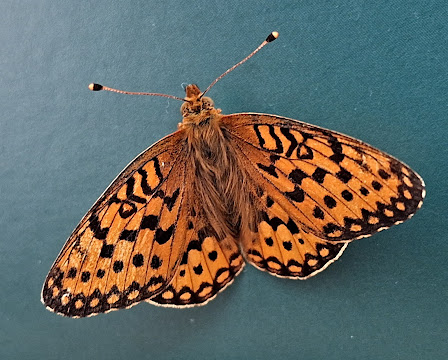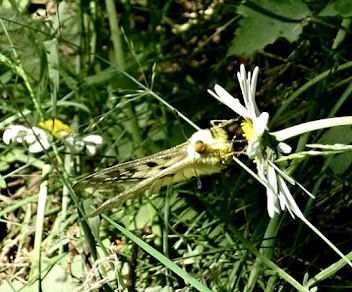 | |||
| The most scenic cup of coffee in Oregon |
This week we had reservations to stay at the Paradise Lodge on Mt. Rainier. Unfortunately, the reservation didn't make it onto our calendar and other things got scheduled for dates that made this trip a bit more than we could handle. So Paradise got cancelled and we looked for a replacement that would fit into the revised schedule. If you live anywhere near Portland, Mt. Hood is an appealing alpine alternative. From the standpoint of the naturalist, it can not begin to compare with Mt. Rainier National Park, but its accessibility makes it reasonable second best.
Timberline Lodge on M. Hood is less than an hour and a half from our condo in Vancouver and with an early start we made it well before 9 AM. It was still too chilly for butterflies so we repaired to the lounge surrounding a huge fireplace for a cup of coffee. This is a pretty choice location for coffee, with a spectacular view of the mountain peeking over the urns.
 |
| Wildflowers, Crossbills and the Mountain |
While we were sipping, we noticed some birds in the trees on the slope above the lodge. I went back to the car and retrieved our binoculars. In short order we were up hill among the wildflowers. There were many varieties in glorious bloom. If only I was a better botanist. When we finally found the birds they were Red Crossbills. What a treat!
After our walk, we drove down to Alpine campground, about a half a mile below the lodge. The lodge sits at 6,000 feet elevation and the campground at 5,400. We drove in, parked and were immediately accosted by the camp host. In its wisdom, Mt Hood National Forest has made Aline Campground a non-Day Use area; if we were to remain parked in the campground, Deputy Dog would have to charge us a camping fee. However, he did give us permission to park outside the gate and walk in.
Once we got the car parked, I grabbed my net and walked through the gate. Immediately a small dark checkerspot flew past and lit on a flower beside the road. I deftly netted him off the flower and he was soon in a vegetable bag in our insulated bag, known in our family for a generous benefactor as the Kimmy Bag. In the process I enjoyed a brief look at a beautiful little butterfly, his orange and white spots against the glossy black gleaming in the morning sun.
 |
| Hoffman's Checkerspot, Alpine, Mt Hood, July 2024 |
Although this seemed to be a harbinger of good things to come, the butterflying was slow. I took a walk and saw one more checkerspot at a distance. While I was gone, Sandra saw four and successfully netted one. She was holding it in the net when I returned from my walk. It is our policy to take only one of a species, so this colorful little fellow got a reprieve. As you will see, we probably should have taken a better look at these captured butterflies before making rash decisions.
After a quick lunch, we went back up to Timberline. There we walked the slope where a few spruce trees were interspersed with a variety of wildflowers. My intuition told me that these wildflowers should equal butterflies. But this was not the case. We found one tiny blue that eluded my net and one tiny moth for Daniel Rubinoff, And that was it.
Back down at Alpine, Sandra decided to stay in the air conditioned car while I took a scout. I found a pair of light orange butterflies, the color of the Gulf Frits we have in Hawaii, doing a pas de deux on a grassy slope, cleared by tree cutting. There were stumps and branches for me to deal with as I chased the butterflies up and down this mountain slope. Eventually I stalked one of these recalcitrants as he lit on the end of a cut spruce. I got so close that my net was right next to the butterfly, who was opening and closing his wings in the most tantalizing fashion. As I was only four feet away from the butterfly, I got a great look. The hind wing was pearly gray with silvery spots outlined delicately in black. I swooped, but my net ran into dead branches and on exam contained some tiny twigs but no butterfly. Rats!
The experts agree that this was a pair of Coronis Frits. Mercifully we saw this butterfly and took a very good picture at Mt Rainer two years ago. I'm including that picture here.
We capped off the day at about 4,000 feet with Sandra doing her crosswords while I took a quick hike at the Snow Bunny sledding park. I was hoping for a Green Comma or a California Tortoiseshell. Instead I got one quick look at a very dark frit on the trail leading to the sledding slope. My single swipe as he shot by was totally without hope. The experts agree that this was probably an Hydaspe Frit. And luckily we already have one documented for our list.
 |
| Coronis Fritillary, Mount Rainier 2023 |
And so we took our tiny moth and the checkerspot back to the ranch. When we got home, the checkerspot was somewhat the worse for the experience. There were two blue ices in the bottom of the Kimmy bag and we were lucky that he survived his spell in the cooler. Not only that, but we had put him in a used bag. Heaven knows what it had been used for. From the look of the butterfly it may have been used to apply a coat of bread crumbs to fried chicken. Suffice it to say, we have replaced all our bags with unused bags, "The better to see you with my dear."
 |
| the better to see you with, my dear! |


































